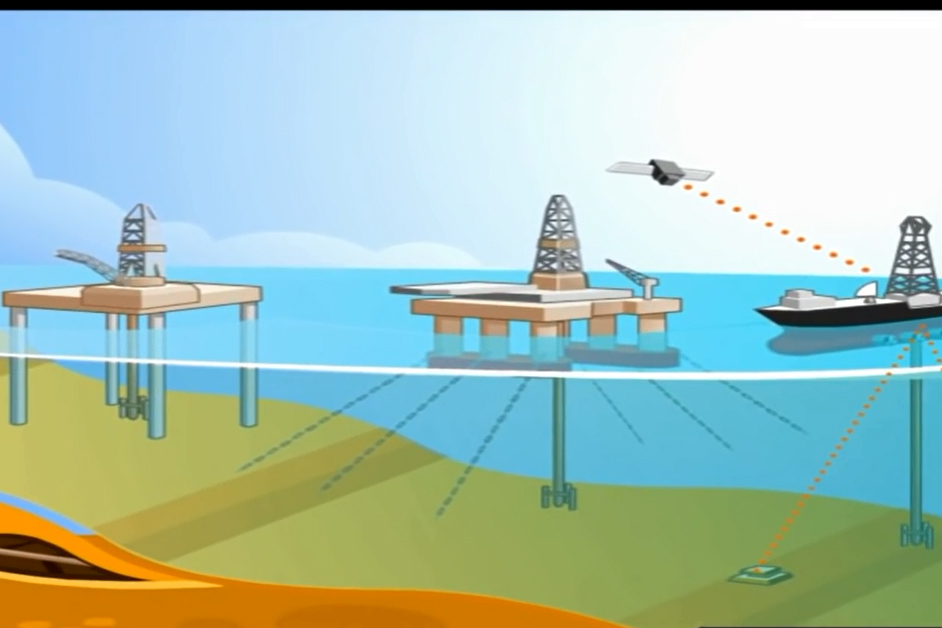Oil and gas are generated from a source rock, organic matter buried in the depths of the earth. Once formed, they climb back towards the surface. On their way, cap rocks can impede their progress and they accumulate in reservoir rocks. Here they constitute hydrocarbon fields, which can be identified by interpreting seismic data (a sort of echography).
The data is obtained with the help of a seismic ship. To confirm the interpretations of seismic data, two types of drilling gear exist. Each is adapted to a range of depth of water (down to more than 2500 meters). The platform seen here is a semi-submersible, which floats and retains its stabilised position by means of anchors fixed on the seabed.
Platforms at sea are used not only for drilling but also for the production of hydrocarbons. This production consists of the separation of oil, gas and water, before the oil and gas is taken by pipeline towards a mainland terminal. Where it is impossible or too expensive to link the field to the coast by a pipeline, an FPSO ship is used (Floating Production Storage and Offloading barge). Onboard, the hydrocarbons and the water are separated. The oil is stored prior to being loaded on tankers and the gas is re-injected into the reservoir rocks. Gas from a field is taken to land through an underground gasoduct to a processing plant.
There, if the gas is to be transported by sea, it is converted into liquid obtained by cooling it down to —163°C. When it arrives at the plant terminal, the liquid natural gas (LNG) is returned to its gaseous state in a re-gasification plant, before being introduced into the local gasoduct network. The LNG is stored in tanks before re-gasification. The crude oil is transported in a petroleum tanker, the capacity of which can attain 200 000 tons. It is commonly called a "super- tanker". The terminals capable of receiving such giants are few and far between. The ships used to transport the crude oil produced on an FPSO ship are of a much smaller capacity. The crude oil, before being refined, is stored in the port in the large capacity tanks.
The natural gas is preserved in reservoirs (artificial or natural). It is ready to be injected by pumping into the gasoduct network for industrial and domestic use or as fuel in power-generating stations. As far as the crude oil goes, it is transported by oleoduct to the refinery. There it undergoes a number of transformations and blending. A variety of finished products are obtained (LPG, petrol, kerosene, diesel ...), or naphtha, which will be used as the basis for the composition of plastic products by complex petroleum chemistry.
Source: Oil & Gas Videos/Youtube.com

News ID 277220

Your Comment